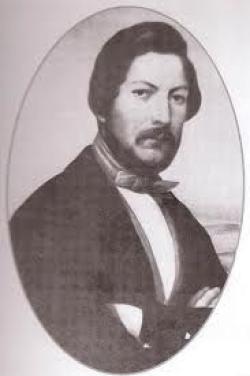
Published date
26 December 1838
Piet Retief's visit to Dingane's kraal in October 1837 was the beginning of an eventful relationship between the Zulu and the Voortrekkers. Retief was in high spirits at the prospect of negotiating a land deal that would have led to his group being allowed to settle Natal. Following talks between Retief and Dingane, the voortrekkers descended into Natal in November 1837 to prepare for establishment of their settlement. Dingane appeared ready to grant land to Retief and his party, but had one condition: that they retrieve cattle stolen from him by Chief Sekonyela. Retief, accompanied by 69 men, invaded Sekonyela and retrieved Dingane's stolen cattle. Dingane then granted the Voortrekkers the land that stretched from south of Thukela river as far as Mzimvubu river in present day Eastern Cape. As a token of his appreciation, Dingane invited Retief and his party to a feast held in February 1838 at his capital, Umgungundlovu (present day Petermaritzburg). Retief and his followers were asked to leave their guns outside the royal palace when attending the celebrations. In the middle of festivities, Dingane ordered his men to attack the Voortrekkers. The unarmed Voortrekkers were caught and marched to the hill of Kwamatiwane were they were butchered. The killing of Retief and his party incensed other Voortrekkers who planned an attack on Umgungundlovu. In December 1838 the Voortrekkers defeated the Zulu in what became known as 'the battle of Blood River'. At the end of this war, Dingane fled to Swaziland where he died in 1840. An auction of Piet Retief's possession was held ten days after the battle of Blood River on 26 December 1838. References: Wallis, F. (2000). Nuusdagboek: feite en fratse oor 1000 jaar, Kaapstad: Human & Rousseau. Encounter South Africa,Piet Ritief, [online] Available at:www.encounter.co.za [Accessed at:28 November 2013] Giliomee, H and Mbenga, B (eds) (2007) New History of South Africa (Cape Town), pp. 116-118